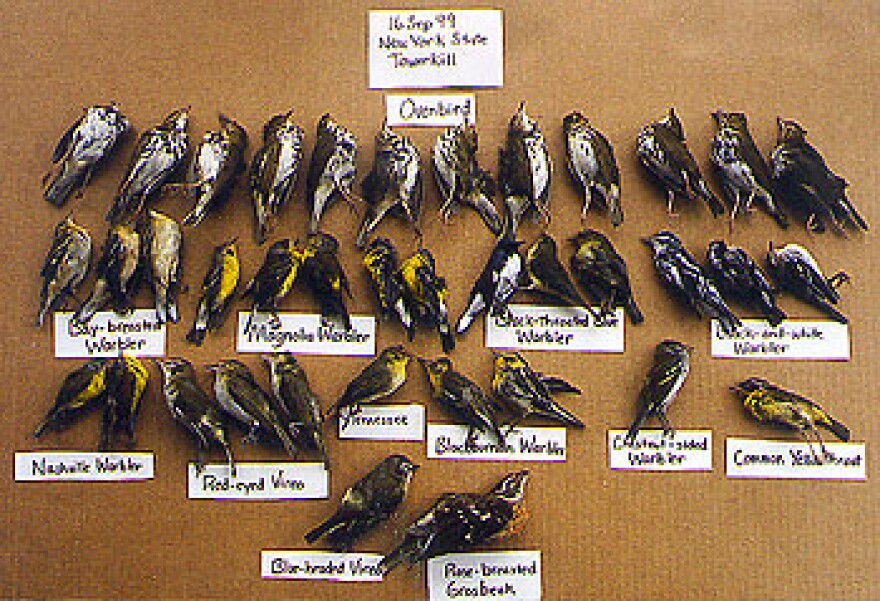Communications towers make all kinds of things possible. Emergency responders, TV stations, and wireless networks need them, and of course, when you listen to stories on the radio, they come to you by way of a tower.
These towers have lights on them at night so pilots can see them and avoid running into them.
But it turns out, some kinds of tower lights can be deadly for migratory birds.
The U.S. Fish and Wildlife Service and other groups recently looked at bird-tower collisions in the U.S. and Canada. The study estimated that close to 7 million birds are killed each year. Neotropical songbirds that migrate at night are the most affected.
Joelle Gehring is a senior conservation scientist at the Michigan Natural Features Inventory. It’s part of Michigan State University.
"We don’t understand the exact psyche of what’s going on with birds and why they’re attracted into the lights," she said, "but it is not unlike a moth attracted into a porch light."
She says during the spring and fall migration, birds that fly at night can get confused by the steady-burning lights on towers. She says cloudy or foggy nights make it hard for birds to navigate using stars.
"Some people believe that when the stars are obscured from vision of these migratory birds who are using stars and sunrise and sunset for navigation, that that is when they are drawn into the lights of the communication tower, that is when they start circling and circling and potentially hitting a guy wire or becoming simply exhausted," she said.
And she says it appears red lights might be more harmful than other colors.
"There is also some evidence from laboratory studies that have shown the red lights actually change the chemical ability of the bird to use magnetic fields for navigation."
Gehring has been working with government agencies and the tower and communications industries to come up with a solution. She and her colleagues conducted research using the Michigan State Police tower system.
"The steady burning lights, the lights that don’t blink, those lights appear to be drawing in birds at a higher rate and in higher densities than lights that were flashing."
They found that when they turned off those steady burning lights off, fewer birds ran into the towers.
"By eliminating those steady burning lights, we were able to reduce avian collisions by 50 to 70 percent, and those are towers with guy wire supports."
But Gehring says human safety has to come first. So before any changes could be made, the Federal Aviation Administration had to make sure they would be safe for pilots.
The FAA just completed that three-year study. Researchers ran flight evaluations in northern Michigan and tested various kinds of lighting setups for towers. They found that those steady burning lights could be replaced with flashing lights on some towers. And they found that on tall towers, the steady burning lights could be turned off completely, as long as there were other lights that were flashing.
The FAA could not make anyone available for an interview by our deadline, but in an email statement, a spokesperson said the agency has updated its tower lighting guidelines. That means tower operators are now legally able to change their lighting systems if they want to, and if government agencies give them the okay.
Darin Schroeder is Vice President of Conservation Advocacy for the American Bird Conservancy. He says making small changes to tower lighting systems could have a big effect on bird kills.
"Migratory birds are in decline. So reducing one anthropogenic threat to birds is a hugely important task – and one we’re really excited about," he said.
Requests for comment from industry groups were not returned by our deadline.
In case you’re wondering, I talked with Michigan Radio’s chief engineer, and he says he’s looking into the new FAA guidelines.
This story was informed by the Public Insight Network.



